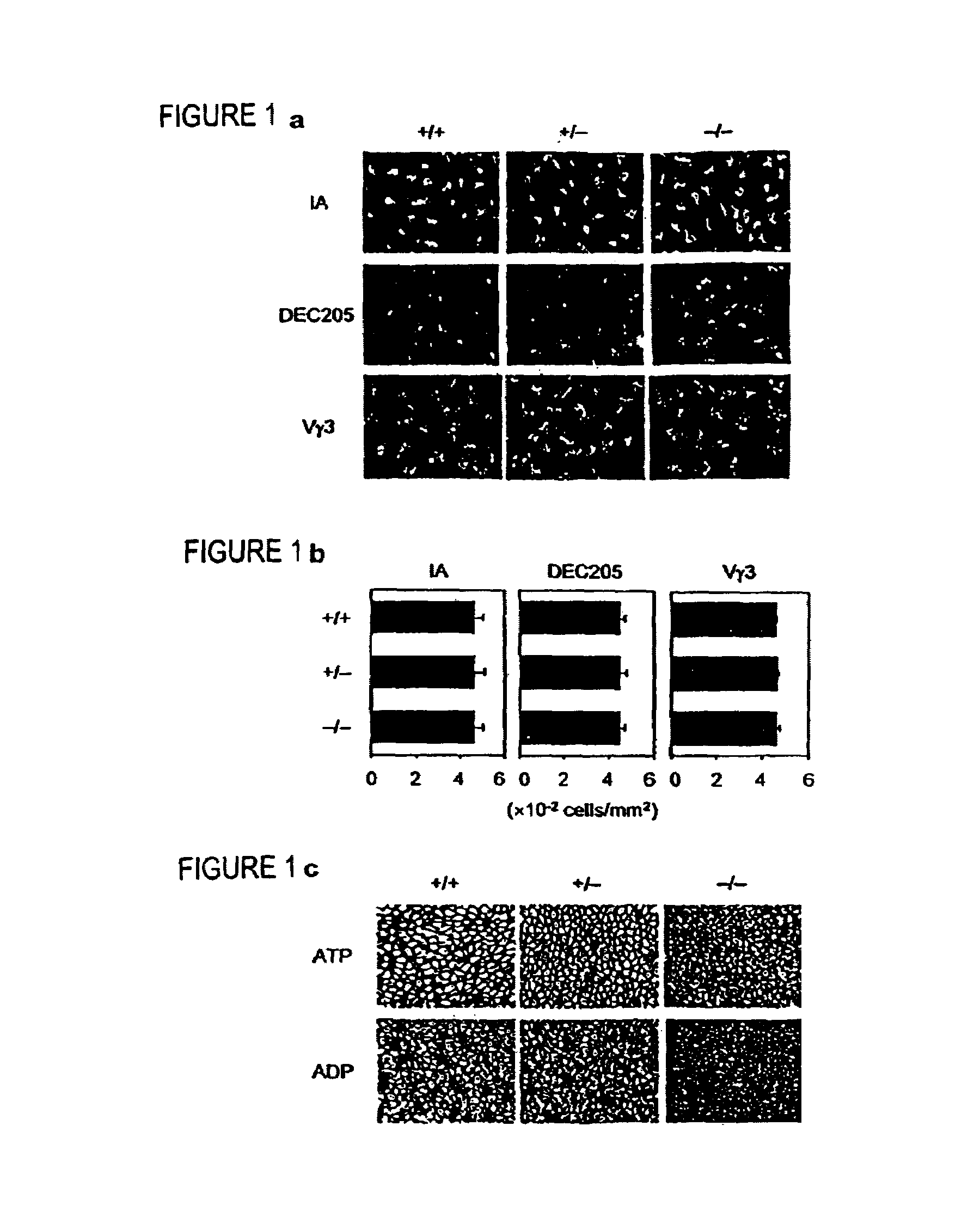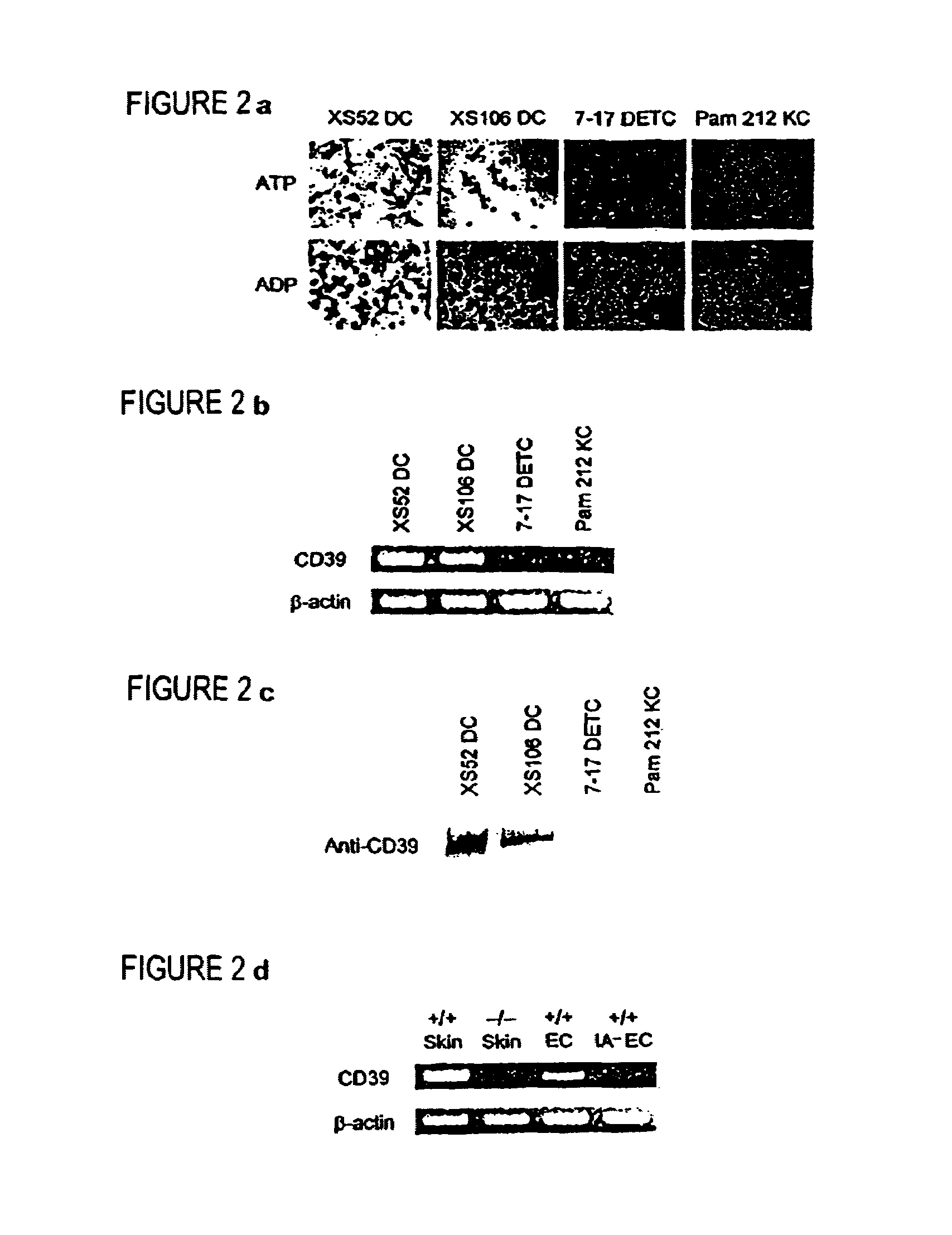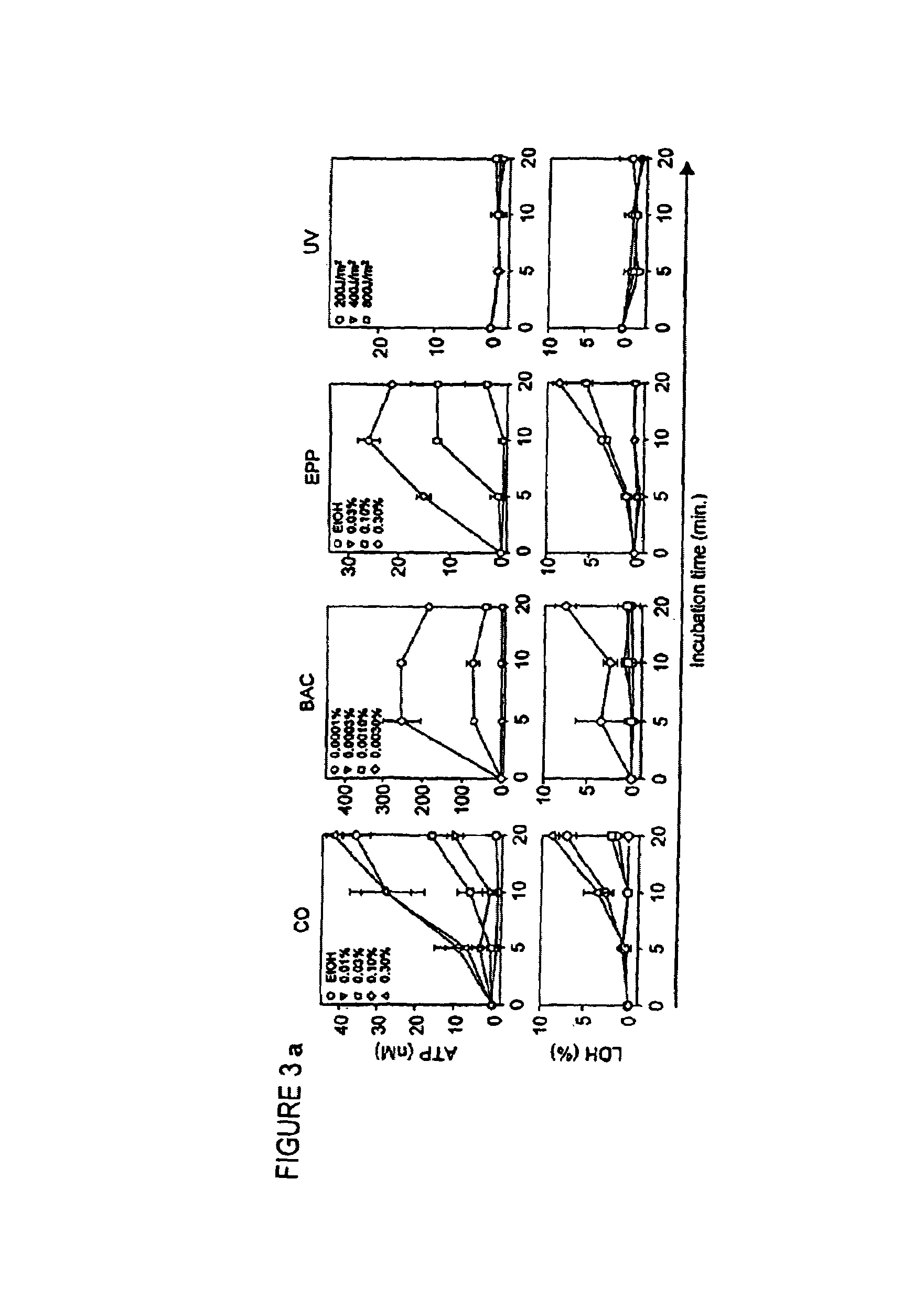Diagnosis and treatment of inflammation and hyperactive immune conditions
a hyperactive and immune-related disease technology, applied in the field of cell biology and biochemistry, can solve the problems of affecting many individuals, unable to accurately predict the irritant potential of various chemicals, and affecting the cutaneous contact dermatitis of irritants,
- Summary
- Abstract
- Description
- Claims
- Application Information
AI Technical Summary
Benefits of technology
Problems solved by technology
Method used
Image
Examples
example 1
Role of CD39 in Chemical Inflammation
[0250]Materials and Methods
[0251]Animals and cell lines. Construction and initial characterization of CD39− / − and CD39+ / − are described in Enjyoji et al., (1999), incorporated herein by reference. Three age- and sex-matched panels, i.e., CD39− / −, CD39+ / −, and CD39+ / + mice, were compared in parallel in all experiments. Phenotypic and functional properties of the XS52, XS106, 7–17, and Pam 212 lines have been reported previously (Xu et al., 1995; Matsue et al., 1999; Matsue et al., 1993).
[0252]Whole mount epidermal staining for LC and DETC. Epidermal sheets were separated from ear skin and footpad skin by ammonium thiocyanate treatment and subjected to immunofluorescence staining with FITC-conjugated mAb against IA, DEC205, or Vγ3 T cell receptor. The number of positive cells were counted by a third experimenter under a fluorescence microscope equipped with a digital camera and an image analysis software as before (Mummert et al., 2000, incorporate...
example 2
Role of CD39 in Immune Responses
[0267]Materials and Methods
[0268]Measurement of DC function. The homing potential of LC was examined by counting the number of IA+ epidermal cells 48 hr after local injection of recombinant TNFα (100 ng / animal) and the number of FITC+ / IA+ cells in DLN 24 hr after topical application of 0.5% FITC (Mummert et al., 2000). Maturational states of migratory LC were assessed by the surface expression of CD86 and CD40 by the FITC+ populations in DLN. In the in vitro reconstitution experiments, LN cells harvested 24 hr after OX painting were enriched for LC by centrifugation through 14.5% metrizamide and co-cultured with LN T-cells isolated from a different panel of mice that had received OX painting 7 days earlier. In adoptive transfer experiments, bone marrow-derived DC were pulsed with 1 mM TNBS in vitro and s.c. injected into CD39+ / + mice (5×105 CD11C+ cells / animal); the recipient animals were challenged 7 days later with 1% TNCB (right ear) or vehicle alo...
PUM
| Property | Measurement | Unit |
|---|---|---|
| Concentration | aaaaa | aaaaa |
Abstract
Description
Claims
Application Information
 Login to View More
Login to View More - R&D
- Intellectual Property
- Life Sciences
- Materials
- Tech Scout
- Unparalleled Data Quality
- Higher Quality Content
- 60% Fewer Hallucinations
Browse by: Latest US Patents, China's latest patents, Technical Efficacy Thesaurus, Application Domain, Technology Topic, Popular Technical Reports.
© 2025 PatSnap. All rights reserved.Legal|Privacy policy|Modern Slavery Act Transparency Statement|Sitemap|About US| Contact US: help@patsnap.com



